Beechgrove
Houses within 10km of this house
Displaying 47 houses.
Houses within 10km of Beechgrove
Displaying 47 houses.
| House name | Description | |
|---|---|---|
| Moore Hall | Built in 1795 and burnt down in 1923. The residence of George Henry Moore, MP, at the time of Griffith's Valuation, when it was valued at £45. Slater refers to it as the seat of George A. Moore in 1894. The ruin is now owned by Coillte Teoranta. |

|
| Levally | Home of the Fair family for a time in the 19th century. At the time of Griffith's Valuation it was leased by James Simpson from the Earl of Lucan's estate and valued at £5. It is described as a "Herd's House". It was unoccupied in the early years of this century and for sale in 2007. Demolished in September 2007. |
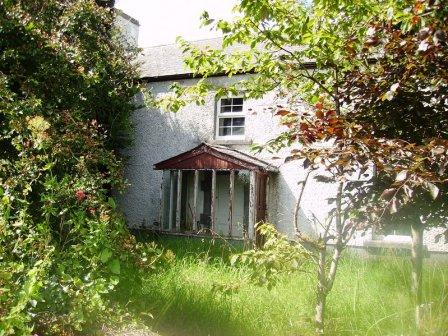
|
| Castlecarra | Granted to Sir Henry Lynch after the Restoration, it was the family's main home in county Mayo for much of the 18th century. In 1786 Wilson refers to Castle Carra as the seat of Mr. Lynch. The mansion house and offices at Castlecarra were described in 1844 by Samuel Nicholson as "now almost ruins". Castlecarra was leased to the Brownes of Castlecarra at this time and was part of their property for sale in 1852. The ruins of the original tower house are still extant but much of the surroundings are now covered by forestry. | |
| Lagaturrin | The house at Lagaturrin was valued at £6 at the time of Griffith's Valuation, when it was occupied by William Fitzmaurice. William R. Falkiner lived here in the early 1860s. It is no longer extant. | |
| Brownhall | In 1786 Wilson refers to Brownehall as the seat of George Browne. Described in the Ordnance Survey Name Books of the 1830s as "a handsome, commodious building" . It was held in fee by James Browne at the time of Griffith's Valuation, when the house was valued at £25. It is no longer extant. | |
| Mount Pleasant | Home of George Mahon in 1814 and of Charles G. Mahon in the 1850s when the house was valued at over £22. It is no longer extant. | |
| Purrauns | Home of a branch of the Bell family of county Mayo and occupied by the Lynches in the mid 19th century. At the time of Griffith's Valuation it was occupied by Patrick King leasing from James Lynch when the buildings were valued at £5. Buildings are still extant at the site. |

|
| Ballinafad | Bence Jones states that the house was built in 1827 and was sold to the African Missionary Brothers circa 1908 by Lieutenant Colonel Llewellyn Blake of Ballinafad and Cloghballymore, county Galway. It is recorded as his seat in 1894. The Irish Tourist Association File states that the house was donated to the African Missionary Brothers by Colonel Blake and that a new wing was added in 1932. For sale in 2012. |
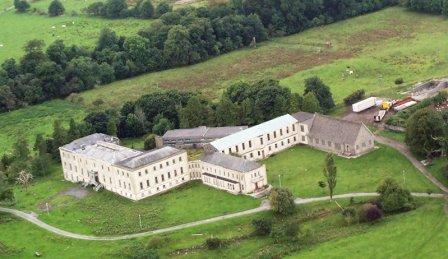
|
| Bridgemount House (Drum) | The home of the Acton family in the 19th century and the seat of G.H.Acton in 1894. At the time of Griffith's Valuation it was held in fee by George Acton and valued at £10. It was later the home of the Coyne family and is still extant and occupied. |

|
| Carnacon House | Home of the McDonnell family in the early 19th century and probably earlier as local sources suggest General James McDonnell, who fought in the 1798 Rebellion, was born there. In 1844 described by Samuel Nicholson as "neat and comfortable, prettily situated upon the lake and ornamented by thriving plantations". It was purchased by the Hughes family in the 1940s and is still in their possession. |
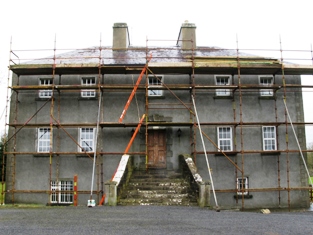
|
| Castlelucas | A house belonging to the Blakes of Ballinafad, let to Lieutenant Hugh Ryan in 1814 and to Mrs Phibbs in the 1830s who subleased to George Ormsby of the Ballinamore family. At the time of Griffith's Valuation, it was leased by Matthew Phibbs from Mark Blake and valued at £5. It is no longer extant. | |
| Clogher | According to Bence Jones this house was built circa 1798 though Wilson refers to a house at Clogher as the seat of Patrick Lynch in 1786. In 1844 Samuel Nicholson described Clogher House as "amongst the largest and the best in the Country, and appears to be kept in excellent order". Patrick C. Lynch was leasing it from Sir Robert H. Blosse at the time of Griffith's Valuation, when it was valued at £40. It was in the ownership of the Fitzgerald Kenney family at the beginning of the 20th century and is now a ruin. |

|
| Hollybrook | In 1786, Wilson refers to Boullybeg as the seat of Mr. Crean. This house was the home of the Creans and Crean Lynches. At the time of Griffith's Valuation the house was occupied by Ephraim and George Anderson, leasing from Patrick C. Lynch, when it was valued at £25. It is now a ruin. |

|
| Fortlawn Cottage | William Mulrooney held this property in fee at the time of Griffith's Valuation when it was valued at £5. It is labelled as Fortlawn Cottage on both the 1st and 25-inch edition Ordnance Survey maps. A house is still extant at the site. | |
| Partry House | Bence-Jones describes the house, situated on the shore of Lough Carra, as Georgian with a Wyatt window above the porch. It is likely that it incorporates an earlier house built in the latter part of the 17th century. In 1786 Wilson mentions "Cloonlagheen" as the seat of Mr. Lynch. It was the seat of the Lynch/Blosse Lynch family for three centuries. At the time of Griffith's Valuation, it was held in fee by Henry Lynch Blosse and valued at £14. Owned briefly by David Shaw Smith in the 1990s, now the home of Lorraine O'Donoghue. |

|
| Portroyal | In 1786 Wilson refers to Port Royal as the seat of Mr. Gildea. At the time of Griffith's Valuation, the townland was in the possession of James and Anthony Knox Gildea and the house was valued at £2 10s. The house is not shown on the 25-inch Ordnance Survey map of the 1890s. | |
| Thomastown | Thomastown was originally leased by Christopher Bowen to Francis Lambert in 1777. It was the residence of Thomas Valentine Clendining in the first half of the 19th century. The unoccupied house was held by Charles G. Mahon at the time of Griffith's Valuation when it was valued at £30. Some buildings survive at the site. | |
| Towerhill | A late 18th century house, occupied by the Blakes until the mid 20th century, now a ruin. 1n 1894 Slater refers to it as the seat of Colonel Maurice Blake. It was valued at £60 at the time of Griffith's Valuation, when it was occupied by Valentine O'Conor Blake. |
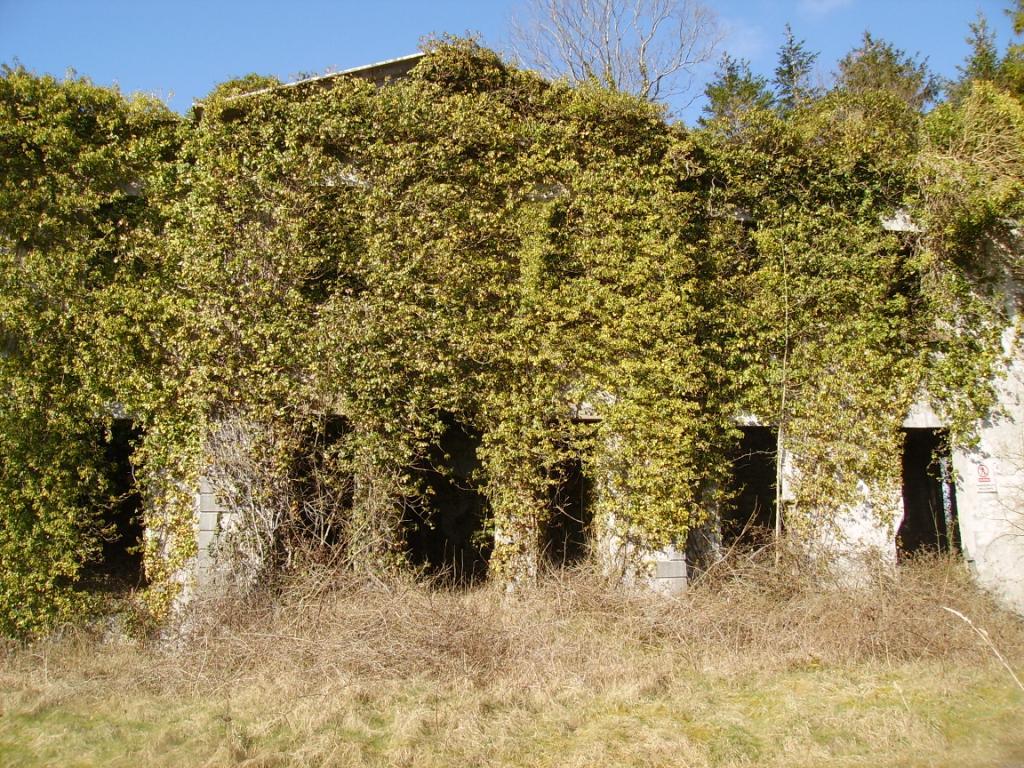
|
| Cloonee | A house built circa 1760, sometimes known as Lakeview. It was occupied in the late 1770s by a member of the Browne family and from the early 19th century by the Blakes. Thomas Walsh was the occupier at the time of Griffith's Valuation. He held the property from Colonel Charles Knox. Cloonee was the home of William Creagh Burke in the early 20th century. The "Connaught Telegraph" of 9 March 1935 reported the sudden death of William C. Burke of Lakeview in the Main Street of Ballinrobe when a fair was taking place. The property passed by marriage to the Ruttledge family of Bloomfield. see www.clooneehouse.com/ |

|
| Cloonnagashel | A house inhabited by the Gildea family from the mid 18th century and situated on the estate of the Earls of Lucan. Wilson refers to it as the seat of James Gildea in 1786. It was the home of James Simpson between 1855 and 1880 , valued at £25 at the time of Griffith's Valuation. Later occupied by the Egan family. It now functions as the club house for Ballinrobe Golf Club. |
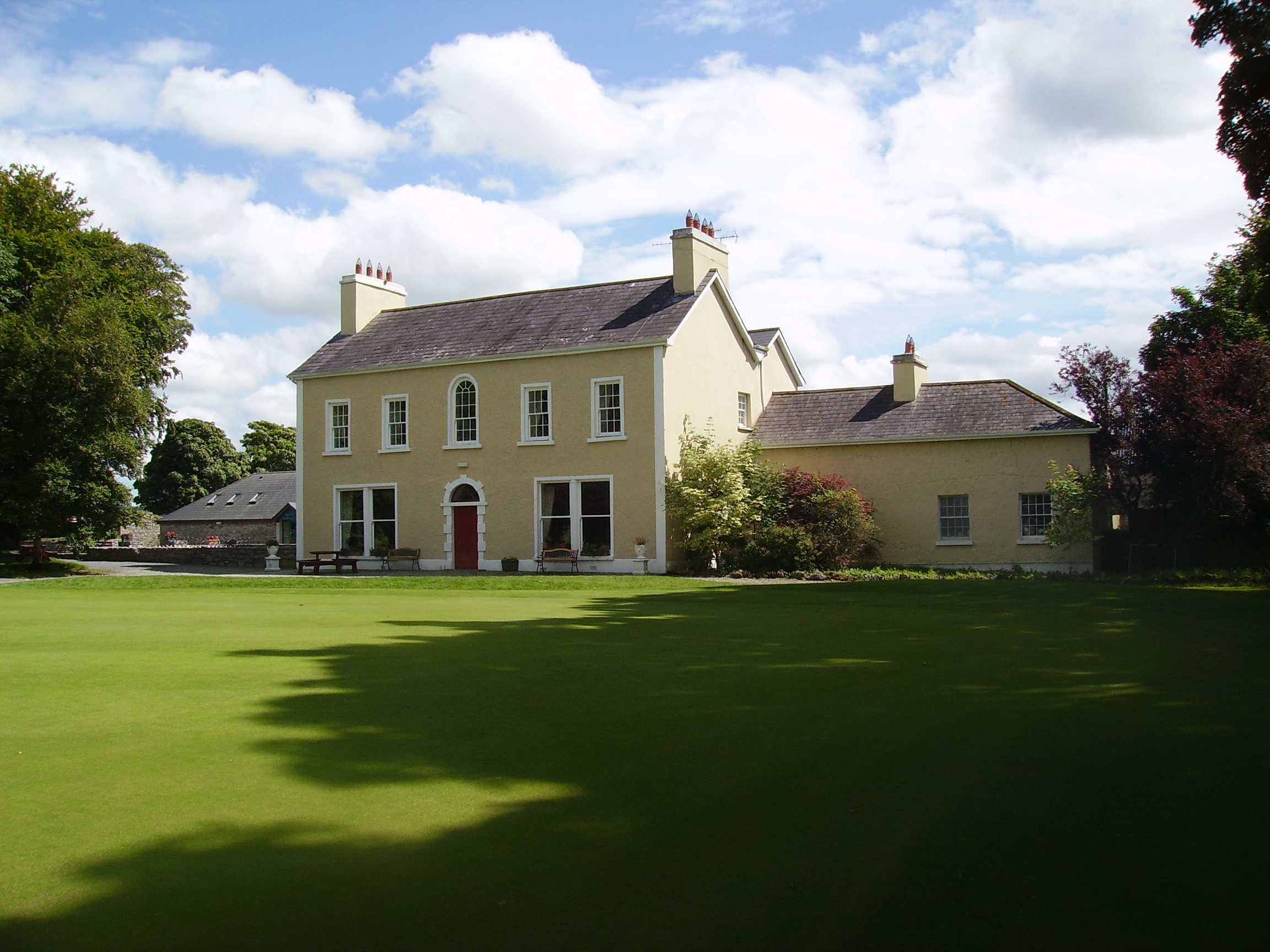
|
| Kilrush | A house in the village of Hollymount, leased by Christopher Bowen from Reverend Christopher Bowen's estate at the time of Griffith's Valuation, when it was valued at £25. Only a few walls remain now. |
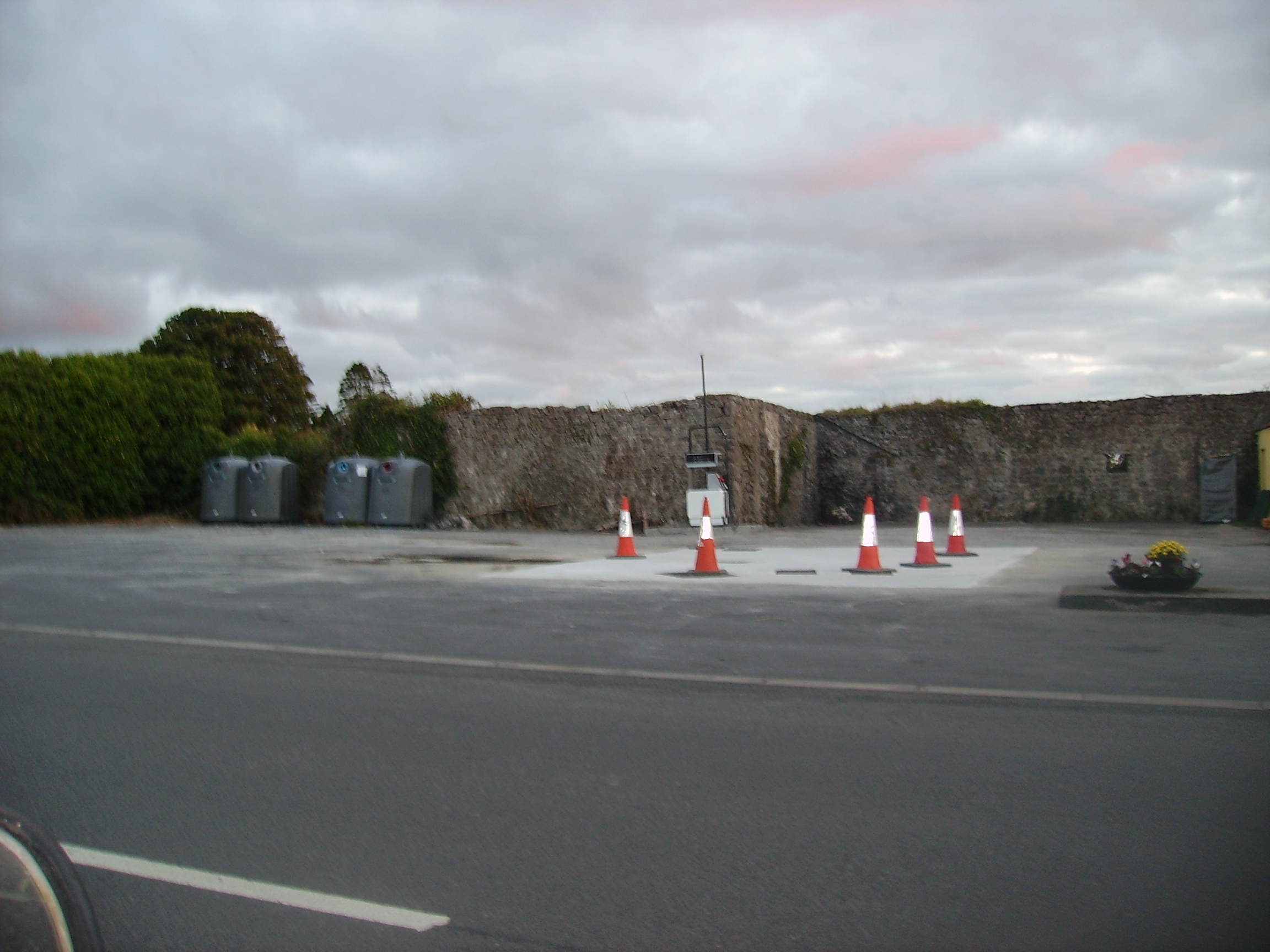
|
| Mount Jennings | Home of the Jenings family in the 18th and 19th centuries. Mount Jennings was held in fee by Benjamin Jenings at the time of Griffith's Valuation when the house was valued at £20. It was the childhood home of the ballad singer, Delia Murphy. Her parents still resided in the house in the 1940s. The roof was taken off the house in the 1970s and it is now demolished. | |
| Kilrush House | Built as an agricultural school in the 1830s, it was not a success and swiftly closed. The property was rented in the 1850s from the Lindseys by Francis Laurie, a farmer from Scotland. He died in 1865 and James Simpson took over the lease. Charles Bingham Jenings and his wife, formerly of Mount Jenings, lived at Kilrush for the first three years of the 20th century. The building is now a ruin. |

|
| Hollymount | A very early 18th century house built by Archbishop John Vesey of Tuam, altered in the 19th century. In 1786 Wilson refers to it as the seat of Mr. Lindsay. It was held in fee by Thomas S. Lindsay at the time of Griffith's Valuation when it was valued at £61. The home of the Lindsey Fitzpatricks until 1922 and of Mr J Loftus in the 1940s, now a ruin. |

|
| Liskilleen | Built by Courtney Kenny in 1862. He was also the owner of the townland at the time of Griffith's Valuation when a herd's house existed there. It is still extant and occupied. |

|
| Togher | Originally a Lambert residence but occupied by George Ruttledge by 1837. It was held in fee by John Hood at the time of Griffith's Valuation when it was valued at £13.. It became the home of his fourth son, Charles Ralph Hood. This house is now completely demolished. | |
| Bloomfield | Built circa 1776, it was the seat of the Ruttledge family. At the time of Griffith's Valuation it was held in fee by Robert Ruttledge and valued at £50. It was also the seat of Robert Ruttledge in 1894. Sold to the Land Commission in 1924 and later abandoned following a fire. |

|
| Farmhill/Carradoyne | In 1786, Wilson refers to Farmhill as the seat of Mr. Vesey. Dean Arbuthnot, who lived in the house in 1814, was rector of the parishes of Crossboyne and Kilcolman and a brother of Sir Robert Arbuthnot. The Gonne Bells were recorded as resident in Lewis and the Ordnance Survey Name Books. The house appears to have been known as Farmhill during the Vesey/Arbuthnot/Gonne Bell ownership and thereafter as Carradoyne House. It was occupied by Thomas Elwood in 1845 and by Lady Lynch Blosse at the time of Griffith’s Valuation. By the 1860s it was the home of the Sheffields. It was occupied by Katherine Tynan and her husband, Henry Albert Hinckson, during World War I. Carradoyne House is still extant and occupied. |

|
| Bushfield | The original house, now a ruin, was sometimes known as Creaghduff. Creaghduff was occupied by Burke esq in the 1770s. Thomas Ruttledge of Bloomfield made his will at Bushfield in 1797 and died there in 1805. Bushfield was the home of Arthur Knox and his wife Barbara, nee Lambert. Their daughter, Elizabeth, married Annesley Knox of Rappa Castle. Barbara married Charles White as her second husband and sublet the house to Robert Fair, son of Robert Fair of Fortville. It was valued at £15 the time of Griffith's Valuation. Robert Fair of Bushfield had an only daughter, Jane, who married Thomas Ruttledge of Bloomfield and their second son took the surname Ruttledge Fair. A new house was built in the 1920s and is the home of the Delaney family. Extensive remains of the original Bushfield farmyard survive at the site. |

|
| Gallow's Hill | Occupied by James Simpson at the time of Griffith's Valuation when the buildings were valued at £20 and leased from the Earl of Lucan's estate. On the 1st edition Ordnance Survey map the name "Gallowshill" is attached to linear set of structures set out in small plots. This has disappeared by the 25-inch edition map of the 1890s and the substantial structure leased by Simpson is located some distance away. The site of this is now almost completely overgrown. | |
| Newbrook | In 1786 Wilson mentions Newbrook, the "elegant and delightful seat" of Henry Bingham. This house burnt down in 1837 and was not rebuilt. Only a small amount of the walls of the house remain but the yard buildings are still in use. |

|
| Summerhill House (Kilmaine) | The residence of Parsons Persse, agent to Lord Clanmorris, at the time of Griffith's Valuation when the house was valued at £8. Summerhill no longer exists but the yard buildings still remain. |

|
| Brownstown | In 1786 Wilson refers to Brownstown as the seat of Mr. Browne. This house is shown on the 1st edition Ordnance Survey map but marked 'in ruins' on the later 25-inch edition. The townland was in the possession of George Browne at the time of Griffith's Valuation. The Irish Tourist Association file describes the house as a 3-storey T shaped plain residence, uninhabited for about 60 years. |

|
| Clooncormick | Home of the Gildea family in the 19th century and of the McCartan family in the late 20th century until it was destroyed by a fire. Francis Knox Gildea was leasing from James Knox Gildea at the time of Griffith's Valuation, when the property was valued at £45. No trace of the house remains but much of the stable yard is still extant. |
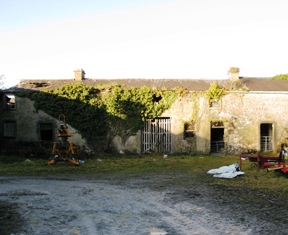
|
| Cornfield | Cornfield was the original Ruttledge home in the Hollymount area and continued to be lived in by family members until the 20th century, although it was replaced as the family's principal residence by Bloomfield. In 1786 Wilson refers to it as the seat of Mr. Ruttledge. In the mid 19th century it was the home of Thomas Ruttledge who married Jane Fair. He was leasing from Robert Ruttledge and the buildings were valued at £20. The existing dwelling is part of the original house, as are the ruins beside it. Local sources suggest that portions of the original house were demolished when the property was acquired by the Land Commission and some of the stone used to build houses in Hollymount village |

|
| Garriestown | This was a Walsh family home in the 19th century. At the time of Griffith's Valuation the house was leased by Thomas Walsh from Robert Rutledge when it was valued at £11. Garriestown is now a large farming enterprise and the house is still lived in. |
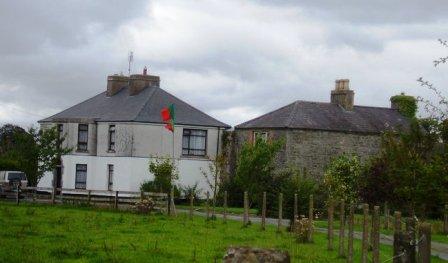
|
| Streamstown | William Coghlan was living at Streamstown, near Claremorris, in 1814. In the 1830s the townland is noted as belonging to Mr. Gonne Bell of Farmhill, Claremorris. By the time of Griffith's Valuation there is no house with a significant valuation in the townland. | |
| Brees/Brize | The original castle was the home of the Moore family in the 17th century. A house was later built which was the home of the Coghlan family in the early 19th century and was occupied by John and Mathew Anderson at the time of Griffith's Valuation, see http://familyhistory.oram.ca/burrishoole/?page_id=1345 . A house is still extant at this site. |
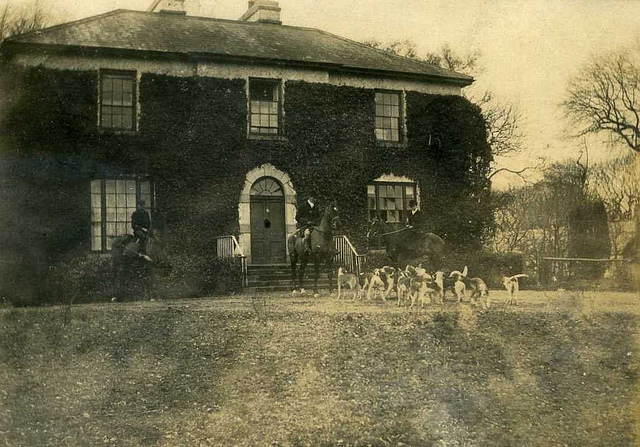
|
| Cloonboy House | The home of John Coghlan at the time of Griffith's Valuation, held from the Lynch Blosse estate when the house was valued at £10. It is still extant. | |
| Cappagh | Cappagh was occupied by James Tighe at the time of Griffith's Valuation when the house, valued at £4, is described as a herd's house. It was built some time before the publication of the 1st edition Ordnance Survey map of 1838 and is still extant and well-maintained. |

|
| Millbrook House | There is a lithograph of this house attached to the sales rental of Lord Oranmore and Browne's estate in 1854. The sale rental states that the late tenant [Lawrence Glynn] recently expended a large sum in building a residence on this lot. This later building is labelled Millbrook House on the 25-inch Ordnance Survey map of the 1890s. It is no longer extant. | |
| Coarsefield | The Grays were in possession of Coarsefield by the late 1830s. The present house was probably built by the Tighe family who bought Coarsefield from the Grays and sold it to the Stephens family in the early 20th century. |
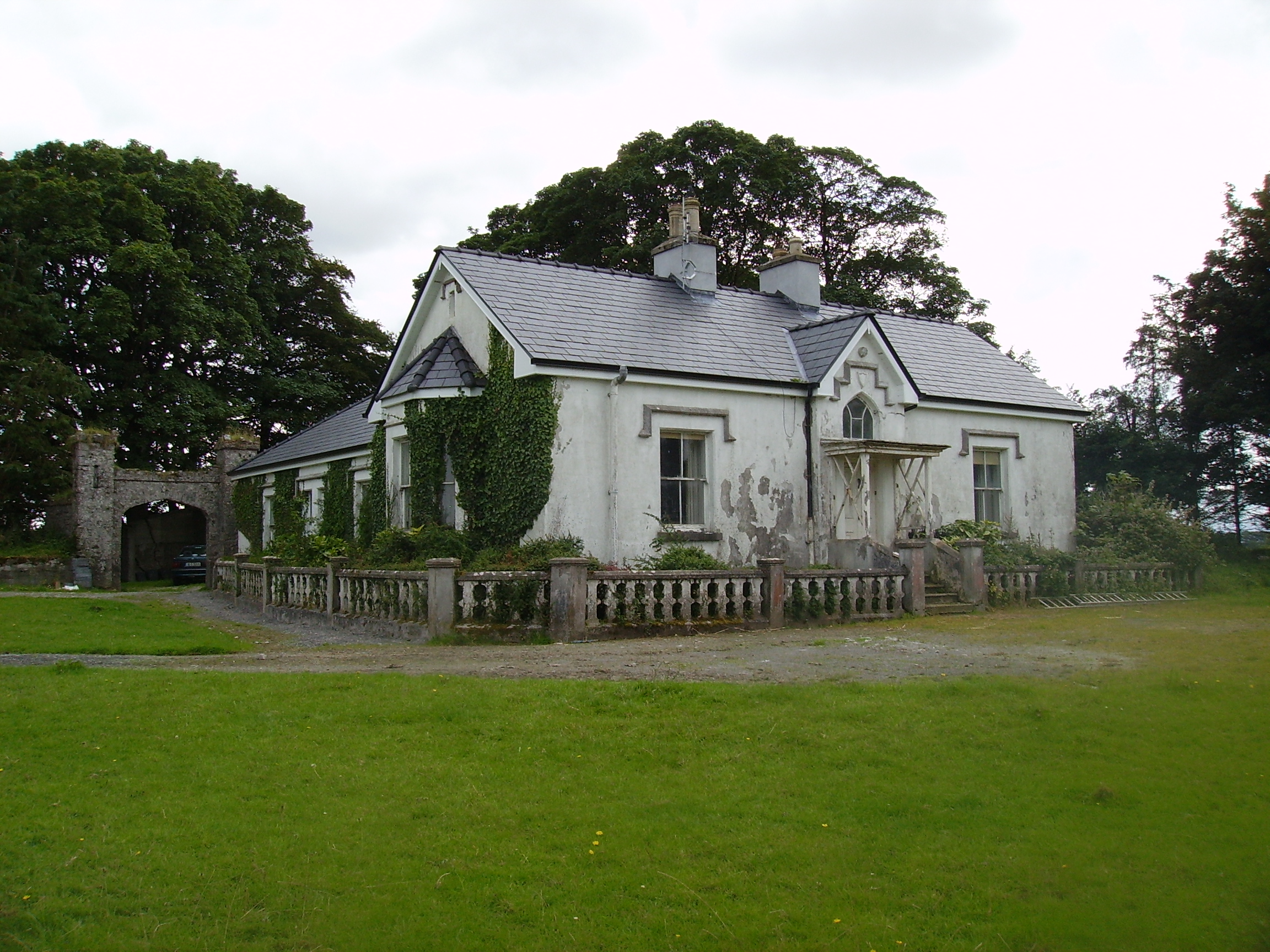
|
| Brookhill | Brookhill was situated on church land held by the Gonnes, who leased the house to the Kirwans in the late 1770s. Occupied by the Lambert family from the 1790s to the 1940s when it was sold to Gerald Maguire, a solicitor in Claremorris. Now the home of the Noone family. |

|
| Lehinch | A house marked on the Taylor and Skinner's map but not on the first Ordnance Survey map. In 1786 Wilson refers to it as the seat of Valentine Blake. The walls of the garden still remain and this was the venue for the Hollymount Show at one time. |

|
| Oory/Coarsefield | It is probable that the townland of Coarsefield was part of Oory in the 18th century and that Oory was divided into two townlands at the time of the first Ordnance Survey. The remains of an old house are still visible at Coarsefield, close to the present house, and it is believed that this was Oory House, home of the Bourkes and later owned by the Nettervilles. In 1814 "Course-field" belonged to James Netterville. The sales rental of the Gray estate of Coarsefield in 1861 refers to one wall remaining of the old Netterville house. |
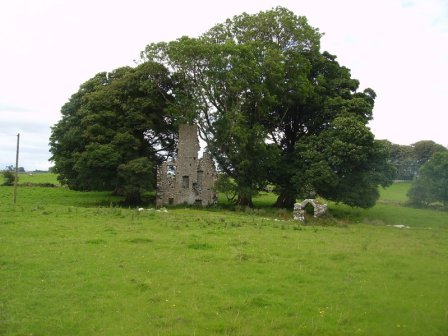
|
| Castleburke | A home of the Bourke family and their descendants. Occupied by Patrick Horan in 1814 and from 1821 James Tuohy was the tenant. The castle was in ruins by the time of the first Ordnance Survey circa 1838. It is now owned by Eamonn de Burca. | |
| Gardenfield House [Kilcommon] | Another Bowen home, occupied by William Bowen in 1814. The townland was in the possession of Henry Martin Blake at the time of Griffith's Valuation. It is labelled Gardenfield House on the 25-inch edition Ordnance Survey map of the 1890s. Still a family home, renovated in the early 21st century. |
![Photo of Gardenfield House [Kilcommon]](https://landedestates.ie/storage/img/orig/731.jpg)
|

